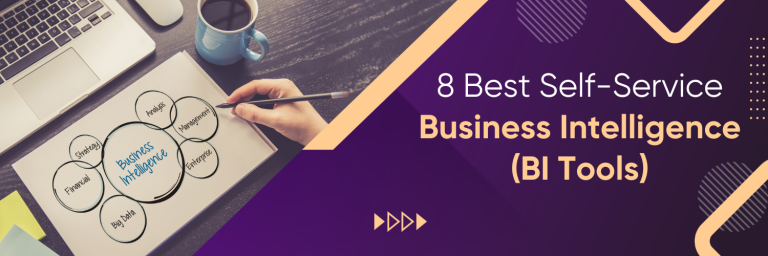
Win Daily: How Self-Service Business Intelligence Software Empowers Your Team
In today’s fast-paced business environment, data is king. Companies that can effectively analyze and interpret their data hold a significant competitive advantage. This is where self-service business intelligence (BI) software comes into play. It empowers users to access, analyze, and visualize data without relying heavily on IT or specialized analysts. This article explores how self-service business intelligence software is transforming businesses and how you can leverage it to win daily.
The Democratization of Data: What is Self-Service BI?
Traditional BI often involved complex processes and required specialized skills. Data was typically accessed and analyzed by a dedicated team. Self-service business intelligence software changes this dynamic. It puts the power of data analysis directly into the hands of business users. This means sales teams, marketing professionals, and operations managers can access and interpret data relevant to their roles. They can then make data-driven decisions without waiting for reports from IT.
The core of self-service BI is its user-friendly interface. These interfaces are designed to be intuitive. Users can connect to various data sources. They can then create their own dashboards, reports, and visualizations. This eliminates the bottleneck created by traditional BI processes. It allows for quicker insights and faster decision-making. This is a key factor in helping businesses win daily.
Key Features and Benefits of Self-Service BI
Self-service business intelligence software offers a range of features. These features are designed to streamline data analysis and reporting. Some of the most important features include:
- Data Connection: Ability to connect to various data sources. This includes databases, spreadsheets, and cloud-based applications.
- Data Preparation: Tools to clean, transform, and prepare data for analysis.
- Data Visualization: Interactive dashboards and reports. They allow users to easily visualize data trends and patterns.
- Collaboration: Features that enable users to share insights and collaborate on data analysis.
- Mobile Access: Accessing dashboards and reports on mobile devices. This enables on-the-go decision-making.
- Advanced Analytics: Some solutions offer advanced analytics capabilities. This includes predictive modeling and statistical analysis.
The benefits of adopting self-service BI are numerous. They can have a significant impact on business performance:
- Faster Decision-Making: Access to real-time data and insights. This allows for quicker and more informed decisions.
- Improved Efficiency: Automation of reporting and analysis tasks. This frees up valuable time for business users.
- Increased Data Literacy: Empowering users to understand and interpret data. This fosters a data-driven culture.
- Better Business Outcomes: Data-driven decisions lead to improved performance. This includes increased sales, reduced costs, and improved customer satisfaction.
- Cost Savings: Reduced reliance on IT and specialized analysts. This lowers the overall cost of data analysis.
Choosing the Right Self-Service BI Software
Selecting the right self-service business intelligence software is crucial. The ideal software will depend on your specific business needs and requirements. Consider these factors when making your decision:
- Ease of Use: The software should have an intuitive interface. It should be easy for non-technical users to learn and use.
- Data Connectivity: Ensure the software can connect to your existing data sources.
- Scalability: The software should be able to handle your current and future data volumes.
- Features: Assess the features offered by the software. Ensure they meet your analysis and reporting needs.
- Pricing: Consider the pricing model. It should align with your budget and usage requirements.
- Support and Training: Look for software providers that offer adequate support and training resources.
- Security: Ensure the software has robust security features. They protect your sensitive data.
Popular self-service business intelligence software solutions include:
- Tableau
- Microsoft Power BI
- Qlik Sense
- Looker
- Sisense
Research and compare different software options. Evaluate their features, pricing, and reviews. This will help you choose the best fit for your organization. This helps you win daily.
Implementing Self-Service BI Successfully
Successful implementation of self-service business intelligence software requires careful planning and execution. Here are some key steps to follow:
- Define Your Goals: Clearly define your business goals and objectives. Determine how BI can support them.
- Assess Your Data: Evaluate your existing data sources and data quality. Identify any data governance issues.
- Choose the Right Software: Select the software that best meets your needs. Consider the factors mentioned above.
- Provide Training: Offer comprehensive training to your users. This ensures they can effectively use the software.
- Establish Data Governance: Implement data governance policies and procedures. This ensures data accuracy and security.
- Promote Adoption: Encourage users to adopt the software. Demonstrate its value and benefits.
- Monitor and Evaluate: Continuously monitor the software’s usage and effectiveness. Make adjustments as needed.
By following these steps, you can maximize the value of your self-service BI implementation. You will be able to win daily by making better, data-driven decisions.
Examples of Self-Service BI in Action
Self-service business intelligence software is used across various industries. It helps businesses improve performance. Here are some examples:
- Retail: Retailers use BI to analyze sales data. They identify trends, optimize inventory, and personalize customer experiences.
- Healthcare: Healthcare providers use BI to track patient outcomes. They improve operational efficiency and enhance patient care.
- Finance: Financial institutions use BI to analyze market trends. They also manage risk and improve investment strategies.
- Manufacturing: Manufacturers use BI to monitor production processes. They identify bottlenecks and optimize resource allocation.
- Marketing: Marketing teams use BI to analyze campaign performance. They optimize their marketing spend and improve ROI.
These examples demonstrate the versatility of self-service business intelligence software. It offers solutions for diverse business needs. It helps them win daily.
The Future of Self-Service Business Intelligence
The future of self-service BI is bright. Advancements in technology will continue to shape its evolution. Key trends include:
- Artificial Intelligence (AI) and Machine Learning (ML): AI and ML will automate data analysis. They will provide more advanced insights.
- Cloud-Based BI: Cloud-based BI solutions will become more prevalent. They offer greater flexibility and scalability.
- Embedded BI: BI will be embedded into business applications. This makes data analysis even more accessible.
- Data Storytelling: The ability to communicate data insights effectively. This will become increasingly important.
Businesses that embrace these trends will be well-positioned. They will harness the full potential of self-service business intelligence. They will be able to win daily. They will stay ahead of the competition.
Conclusion: Empowering Your Team to Win Daily
Self-service business intelligence software is a powerful tool. It empowers business users to make data-driven decisions. This ultimately leads to improved business outcomes. By adopting self-service BI, you can foster a data-driven culture. You can improve efficiency, and gain a competitive advantage. Start exploring self-service business intelligence software today. Equip your team with the tools they need to win daily. Ensure your business thrives in the data-driven era.
[See also: Related Article Titles]

